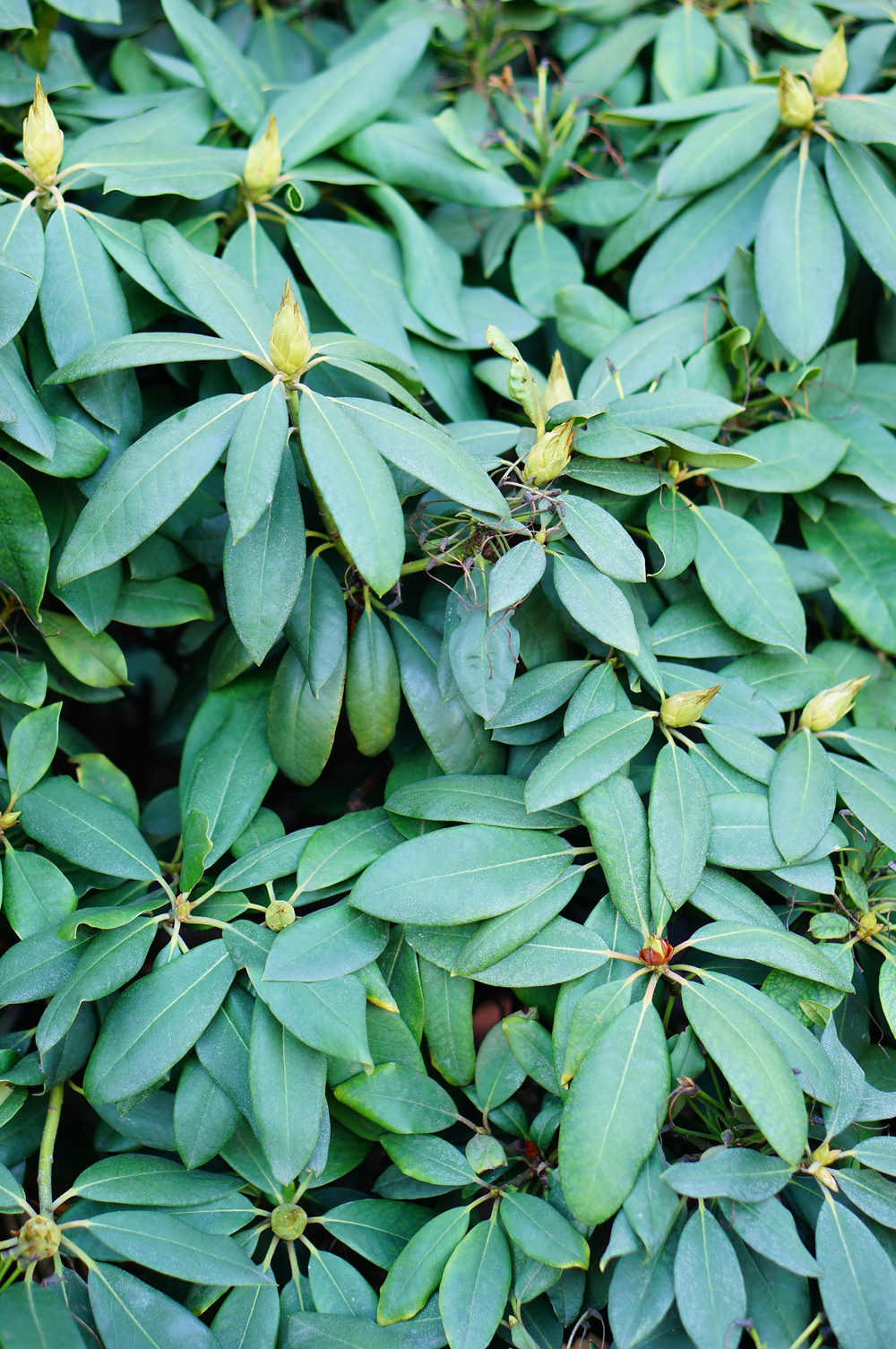Manilkara sp.
Common Name:
Sapodilla

General Information:
A superb shade, street (where falling fruit will not be a problem), or fruit tree, Sapodilla reaches a height of 45 feet with a 40-foot spread. The smooth, dark, and glossy, six-inch-long evergreen leaves are clustered at the tips of twigs and the small, cream-colored solitary flowers appear in the leaf axils throughout the year. The four-inch-wide, scurfy brown fruits have a juicy, sweet, yellow-brown flesh and ripen to softness in spring and summer. The flower-to-fruit period is about ten months. The bark and branches, when injured, bleed a white latex which is the source of chicle, the original base for chewing gum. The trunk on older specimens is flaky and quite attractive, and flares at the base into numerous surface roots.
There are some 85 species of these tropical, fruit-bearing plants. They are also used as ornamentals in the proper environment due to their rounded crowns and glossy leaves. The plant produces a milky latex which is used in chewing gums.
Family:
Sapotaceae
Lighting:
Give plenty of light to this tropical tree!
Temperature:
Zone 10B through 11. A drop below freezing will kill young plants. Older plants can survive to 26F, but it is best to keep these plants warm.
Watering:
Give plenty of water, but insure proper drainage.
Feeding:
Prefers 8-4-8 fertilizer. Advice is to feed garden plants every two months - I assume heavier bonsai feeding is warranted. I might try feeding every two weeks during growth, every six in winter, which is common for other tropicals.
Pruning and wiring:
The plant bleeds milky sap profusely, so beware of drastic pruning.
Propagation:
From seed, and by grafting. Seed grown plants may produce inferior fruits.
Repotting:
Likes well-drained soil. No information how frequently to repot, but the best time for transplanting is in May or June.
Pests and diseases:
Rust, scales and fruit flies occasionally cause problems.
Species suitable for bonsai:
Manilkara bahamanansis (Achras emarginata, Mimusops emarginata). Native to South Florida and the Bahamas, this plants smaller habit (fruit only 3 cm) makes it more suitable for bonsai than the common sapodilla. It has notched leaves and yellow flowers. It flowers in both spring and fall, allowing there to be flowers and fruit on the plant simultaneously. The fruit possesses little edible flesh.
Manilkara zapota (Achras zapota): sapodilla, naseberry, dilly plant. The sapodilla is commonly found as grocery store produce, and can be grown from seed. It has glossy green leaves up to 5 in long which have pointed tips, and white flowers which produce 5-8 cm fruit.
Bibliography:
USDA Fact Sheet ST-405
Compiled by Sabrina Caine Edited by Thomas L. Zane
